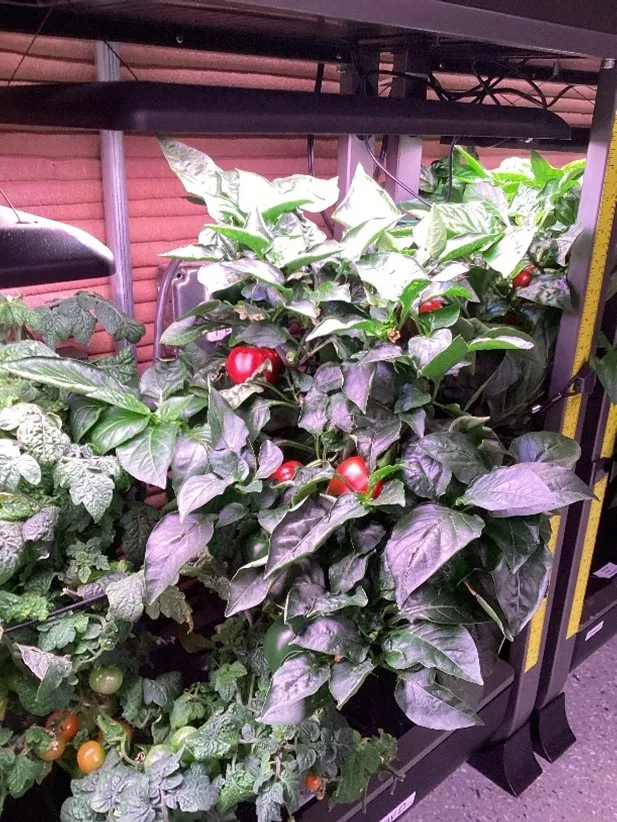“You guys ready to come out?”
These were the first words spoken in person to the simulated Mars astronauts since they entered Mars Dune Alpha 378 days before.
It had been a challenging year for the four pseudo-astronauts. Could you sleep, eat, and work in a 158-square-meter space with three coworkers for company? What about ration food and oxygen to last a year? And how would a 22-minute delay in communications with the outside world affect your mental health and productivity?
NASA wanted to explore those questions on the first of several planned simulated Mars missions, which concluded on Saturday. Astronaut and flight operations deputy director Kjell Lindgren welcomed the participants back to Earth by knocking on the door of their habitat, sparing them the six- to nine-month journey by rocket that real astronauts would endure.
NASA’s Crew Health and Performance Exploration Analog (CHAPEA) sounds eerily similar to the ill-fated Biosphere 2 experiments of the 1990s. There, crew members in a capsule ecosystem devolved into vicious factions due to oxygen deprivation and malnutrition. Fortunately, preliminary reports suggest CHAPEA succeeded everywhere Biosphere 2 failed. In fact, the team’s physician said the year in the habitat “just kinda [flew] by.”

Astronauts’ quarters in Mars Dune Alpha. Photo: NASA/Bill Stafford
Meet the crew

The CHAPEA crew pre-mission portrait. From left to right: Anca Selariu, Ross Brockwell, Kelly Haston, Nathan Jones. Photo: NASA
A flight commander, a science officer, a physician, and an engineer: These were the core crew of Mars Dune Alpha, CHAPEA’s make-believe habitat.
Commander Kelly Haston is a First Nations Canadian biologist who researches human disease. She received a PhD in biomedical sciences from the University of California at San Francisco, where her work focused on infertility.
Lieutenant Anca Selariu, a U.S. Navy researcher specializing in vaccines and disease, served as the crew’s science officer. Originally from Romania, she switched her focus for the duration of CHAPEA from prions — a type of problem protein — to the adverse effects of Mars exploration.
The team’s physician, Nathan Jones, is an emergency medicine specialist with a background in molecular biology. He was working at a hospital in Illinois when he saw an advertisement for the program and applied. “I didn’t expect to hear anything back. I mean, it’s NASA,” he told ABC 20.
Finally, Ross Brockwell is a structural engineer from Virginia who worked as an operations manager, planning commissioner, and infrastructure specialist before CHAPEA.

The crew of CHAPEA journeyed to Mars Dune Alpha on a prototype rover — through a NASA parking lot. Photo: NASA/Josh Valcarcel
But the full crew was larger than just the four people living in isolation. Countless scientists, engineers, and technicians worked around the clock to prepare and maintain the experiment.
Life on Mars
Astronauts on Mars would confront a variety of threats to their well-being, both physical and mental. NASA’s Human Health and Performance Directorate designed CHAPEA to test the effects of a limited diet and long-term confinement on human performance. Studies of scientists overwintering in Antarctica and participants in the Russian-Chinese-European Mars500 analog mission indicate that basic functions begin to deteriorate after a long time in confinement. NASA wants to find ways to mitigate this before sending astronauts on a real Mars mission.
Unlike past analog space missions, CHAPEA emphasized nutrition. The crew supplemented their pre-packed rations with vegetables and fruits they grew themselves. They also trialed different gardening techniques in a Mars-like environment.
The outside team even tested the crew with manufactured problems such as communication delays. In her post-mission remarks, Director of Engineering Julie White hinted that the crew also dealt with unplanned issues that had arisen throughout the mission. It’s not clear yet what those were.

Several of Mars Dune Alpha’s tomato plants. Photo: NASA/CHAPEA crew
“Because it’s possible”
Now back in the real world, the astronauts grinned at their audience. Two of them donned masks, as astronauts coming from Mars would do. Haston stepped up to the microphone to thank everyone involved in CHAPEA and then addressed her family. “I’m so sorry I wasn’t there for you this year.”

Flight commander Kelly Haston speaks to the audience following the CHAPEA team’s egress. Photo: NASA Johnson/YouTube
Ross Brockwell, the structural engineer, was particularly grateful toward his crewmates. “Thanks for tolerating my experiment in hair science.”
“Wow, that went by quickly,” said team physician Nathan Jones. “I really hope I don’t cry standing up here in front of all of you. And as a physician, I’m so glad that my life events led me here instead of being a proctologist.”
Finally, science officer Anca Selariu spoke. Many people, she said, had asked her, “What’s the obsession with Mars? Why go to Mars?” She paraphrased George Mallory’s snappy retort to a journalist who asked why he wanted to climb Everest. “Because it’s possible.”
What’s next?

Two aquanauts from NEEMO 16, the 16th of NASA’s underwater analog missions.
NASA hasn’t yet reported on the scientific results, but with another two missions slated for 2025 and 2027, CHAPEA is far from over. Applications are closed for the 2025 mission, but if you’re a U.S. resident with a STEM (science, technology, engineering, or math) degree who fancies 378 days in an enclosed space with three strangers, keep an eye out for the 2027 call for applicants.
And while CHAPEA may be the longest of NASA’s analog missions, it isn’t the only one. Interested in a simulated rocket trip to Mars? What about a three-week stay at an underwater research station? All of NASA’s analog missions test participants’ reactions to common hazards of space exploration. Alongside confinement and restricted nutrition, these include changes in gravity, isolation, and space radiation.
NASA and other space agencies around the world are working to lessen these risks, but one thing is for sure: If humans make it to Mars, the experience will be a lot closer to Andy Weir’s obsessively scientific nail-biter The Martian than to a Star Trek space opera.






